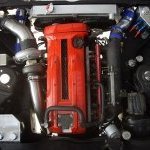R32 - Turbo Upgrade /rb25 Or Vg30?
Announcements
-
Similar Content
-
Latest Posts
-
Hey everyone! Im so grateful to be apart of this community and ill do my best to be apart of this. Firstly, i'm not disclosing my real name due to in real life circumstances surrounding my privacy and public image (sorry lol) Secondly, The only thing personal I am willing to share is that I'm from Sydney and a descendant of one of Sydneys largest mortgage firms. I got gifted my first ever car, a 2022 Porsche Cayenne and I love it to death. Ive been driving it for about 5 or 6 months now and honestly Im so grateful for my parents for gifting me this vehicle. However recently I've been working my ass off to afford my second car (which I need help deciding soooooo community help me out please?). Once decided, im planning to try modify it myself. Recent I've been thinking about getting a Skyline, particularly a 25GT or GT-V, yes I know overrated as hell, but I'm also considering a Chaser which I recently came to love. However my dream is to one day own a 180SX (So hard to find clean versions and im not really into importing). Lastly before I send this off, I want to apologize if I sound tacky or pretentious. I try not to and want to genuinely learn from everyone and anyone. (Im no expert in this area) Thanks for reading!
-
I've got three stashed away but it's starting to get silly with the prices
-
Got the rear subframe in and back on its wheels, also fitted the motor.
-
By Dose Pipe Sutututu · Posted
Don't think I even need a super charger to be honest. Moving to a G35-900, would easily go over 500kW and also come on earlier. Bosch Motorsport ABS would be amazing, and weld in proper side intrusion bars. I feel unsafe in the shit box on the street. Way too many numpties where I live, accidents daily.
-







Recommended Posts
Create an account or sign in to comment
You need to be a member in order to leave a comment
Create an account
Sign up for a new account in our community. It's easy!
Register a new accountSign in
Already have an account? Sign in here.
Sign In Now